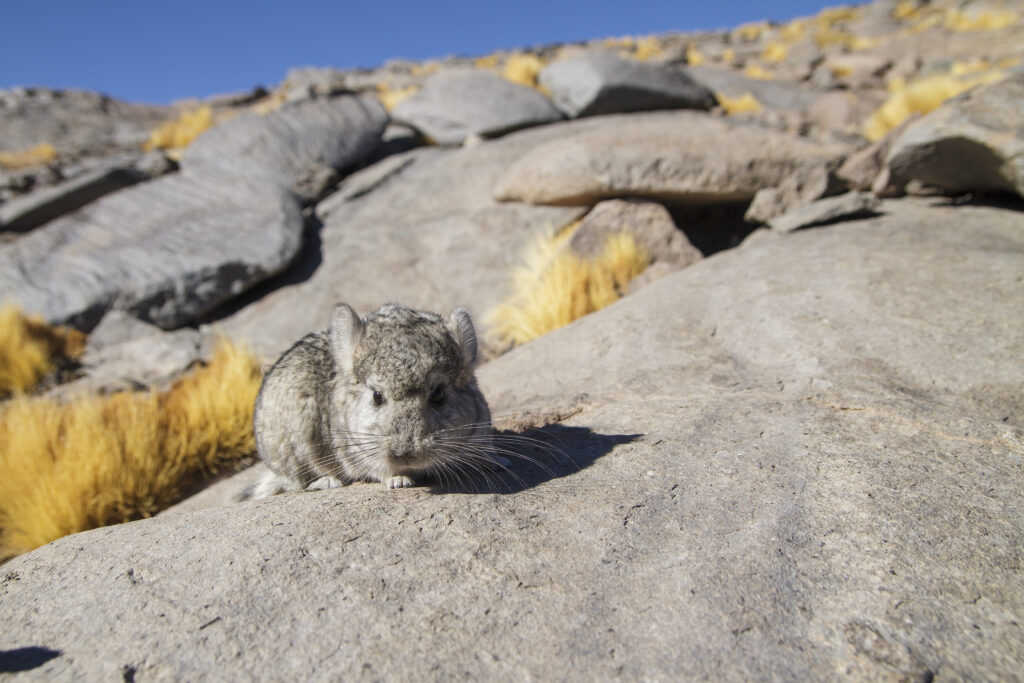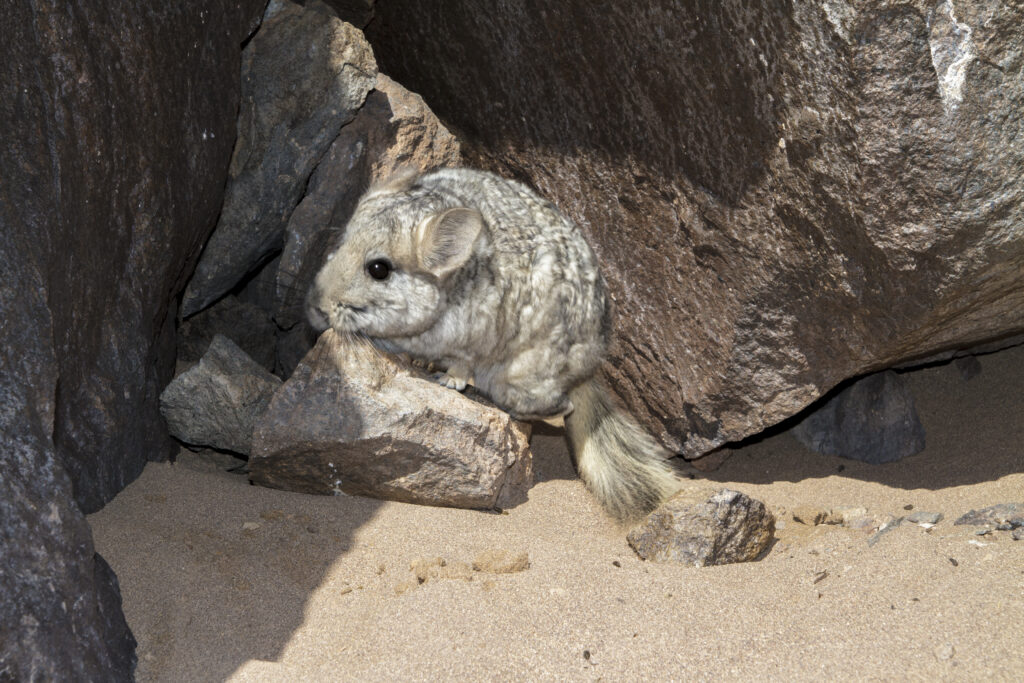It bounces, it leaps, it spins – it’s a… chinchilla!
Chinchillas are quite honestly one of the most adorable little creatures on the planet, somewhat resembling a cross between a squirrel and a guinea pig, but with the “cute” dial turned up to 11. These South American mountain specialists are ‘saxicolous,’ which means they like to live among rocks. A much better word, and one that’s more fun to say out loud, is ‘ricochetal.’ This term means that they move by leaping – or really, bouncing – from rock to rock in their boulder-strewn habitat. Capable of covering up to six feet in a jump, they may look squat and chubby, but they’re really quite impressive little athletes!

The chinchilla also has the densest fur of all mammals that live on land, with around 20,000 hairs per square inch and 50 hairs growing from each follicle. The way I’ve often described it is that if I close my eyes, I cannot tell when my hand touches a chinchilla – it’s that soft. They take care of their amazing coats by dust-bathing, spinning in sand to help remove oils and keep their fur clean and dry.
Unfortunately this incredibly soft fur led directly to the chinchilla’s rapid demise in the wild, as they became hugely coveted in the international fur trade. Chinchilla coats became all the rage in the late 1800s and early 1900s in the US and Europe, and given that it can take over 100 chinchillas to make a coat, demand far outstripped supply. In only a few short decades the two closely related and similar-looking species, the short-tailed and long-tailed chinchillas, were quickly wiped out across most of their range. Today, both species are listed as Endangered. Only a few colonies of short-tailed chinchillas are currently known to exist, while only a handful of colonies are known for the long-tailed chinchilla – and many of these colonies are believed to be declining in number, with a real worry that both species could go extinct in the very near future.
You may be saying to yourself, “Wait, I’ve seen chinchillas being sold in pet stores!” You’re right, they are (and Zoo New England has two that serve as Ambassador Animals in our outreach and engagement efforts). But these are almost entirely descended from a small group brought over in the 1920s, and they are believed to be a genetic mix between the two species (and have been bred over the years to be bigger and often more colorful than their wild brethren). Sadly, because of the genetic mixing and changes from forced breeding, the domestic chinchilla is no longer appropriate for reintroduction back into the wild.

But there’s hope. Zoo New England has recently joined a group making up the new AZA SAFE (Saving Animals from Extinction) Chinchilla Program. We are working with a group of other zoos, the government of Chile, and local partners in Chile on a program to locate and protect any and all remaining colonies of short-tailed chinchillas in the country. There are also plans for genetic and behavioral studies, work with local communities to have them help in protection and monitoring, and finding ways to work with the biggest current threat to chinchilla survival – mining companies that threaten the last remaining habitat of these chinchilla colonies. We’re proud to be a partner on the AZA SAFE Chinchilla Program, and we believe there’s a real chance to rescue, protect, and recover this endearing little animal before it disappears from the wild.
